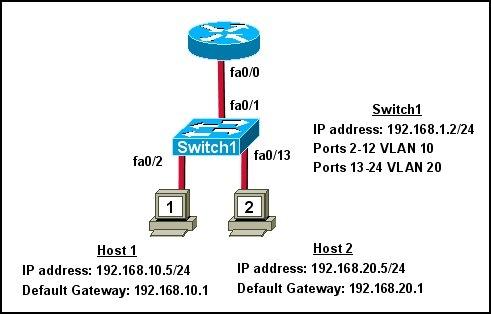
We will then assign Switch1 a host name of 2950sw1.
#Cisco 2950 switch default ip how to
How to make correction in aadhar card details online.Enhanced Interior Gateway Routing Protocol(EIGRP).Configuring Specialized Applications in CUCM.System Maintenance and Troubleshooting in Cisco Unified Communications Manager.
#Cisco 2950 switch default ip Pc
! Interface Examples (You apply a policy to specific interfaces)ĭescription Connected to PC with IP Phone or other VoIP Device

! Weighted Round Robin Example (Traffic shaping with 4 queues specifying COS) Police 5000000 65536 exceed-action dscp 34Ĭlass CM4-Video-and-Priority-Apps-Traffic ! Class Map Examples (Create traffic classes)Ĭlass-map match-all CM 5-VoIP-RTP-Trafficĭescription *************** VoIP RTP Traffic Class Map ****************Ĭlass-map match-all CM 4-Video-and-Priority-Apps-Trafficĭescription ******** Video and Priority Apps Traffic Class Map ********Ĭlass-map match-all CM 3-VoIP-Control-Trafficĭescription ************* VoIP Control Traffic Class Map ************** ! Access List Example (You identify VoIP Control traffic)Īccess-list 103 remark ************** VoIP Control Traffic ************** ! Access List Example (You identify Video and Other Priority Applications traffic)Īccess-list 104 remark ******** Video and Priority Apps Traffic ********* Rules required exceed available resources in ASIC.Ĭonfigure terminal ! Access List Example (You identify RTP Audio traffic)ip access-list extended 105Īccess-list 105 remark *************** RTP Audio Traffic **************** “%Error: Service policy cannot be supported – Trying to apply this QoS policy to every interface runs the 2950 out of resources: Apply the “Per Interface” specific commands to enable QoS on the uplink interface.Adjust the “Weighted Round Robin” queues (via COS markings) to give more weight to RTP Voice traffic.Create a Policy Map that uses your Class Maps.Create Class Maps to “Classify” traffic into groups by name.Create access list 103 for your “Voice Control” traffic.Create access list 104 for your “Priority Applications” traffic like video and Citrix etc.Create access list 105 for your “RTP Voice” traffic (Don’t worry if you don’t list every UDP port, we will get everything with DSCP 46 in the class map later).

Verify that you set your IP PBX and IP Phones to mark Voice RTP traffic as COS 5 / DSCP 46 (and Voice Control traffic COS 3 / DSCP 26 if you can).

In the examples below, it is assumed that Voice RTP traffic is already marked COS 5 / DSCP 46 by configuring your IP PBX and VoIP phones to do so.– All other regular traffic (like email and web) are not marked (by default this usually the case) The following QoS markings are assumed:.Your VoIP gear (Phones and PBX etc.) has the ability to mark voice RTP traffic via COS and DSCP.You are using an existing 2950 only until you can afford to purchase a 2960 or better (You have been warned!).The Cisco 2950 Ethernet switch has some limited basic QoS functionality that you can (and should) configure to support VoIP.


 0 kommentar(er)
0 kommentar(er)
